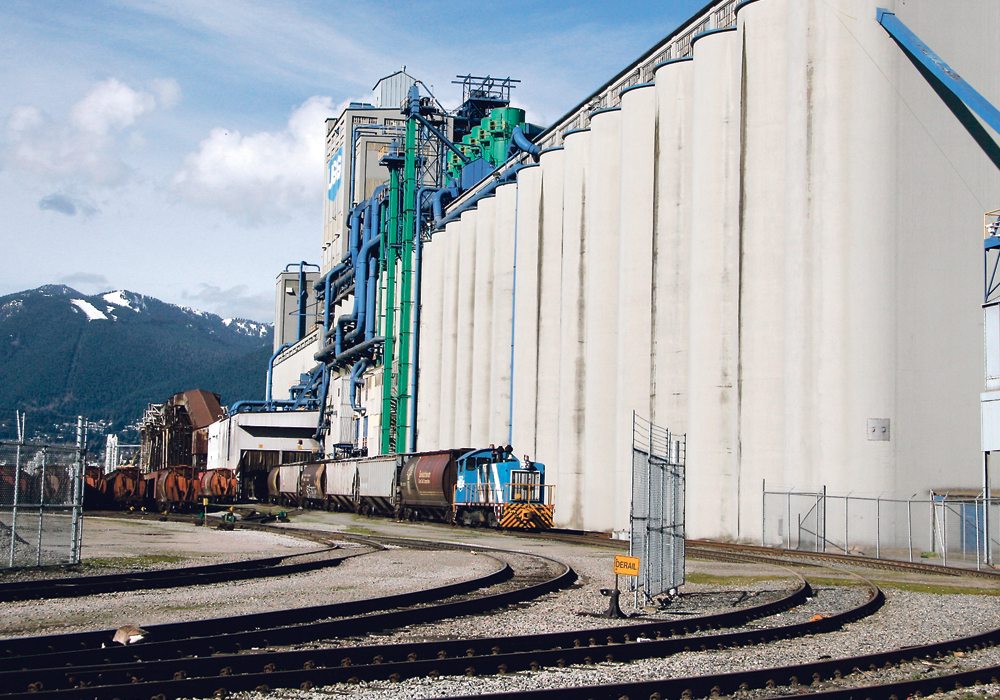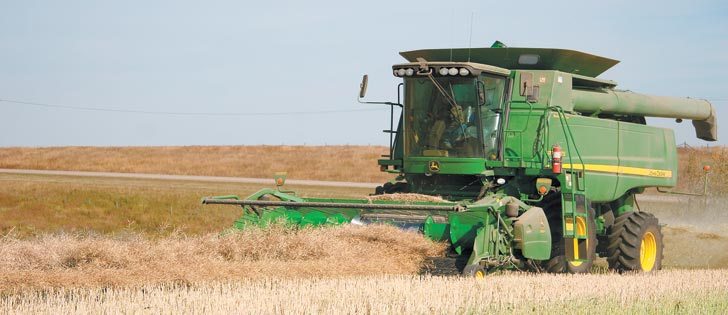It’s a scenario that keeps grain exporters awake at night.
A vessel with 70,000 tonnes of Canadian grain arrives at port in Japan. Samples are taken and tested. The shipment is then rejected because the samples exceed the maximum residue limit for a particular pesticide.
However, exporters such as Richardson International plan for such scenarios and have developed methods to trace the source of the infraction back to an individual farm in Canada.
“Yes, it is possible to trace the source of a rejected shipment of grain back to a farm delivery,” said Lynne Sweeney, the company’s assistant vice-president for quality assurance and food safety.
Read Also

Feds propose overhaul of chronic wasting disease control program
Chronic Wasting disease control program getting updated by Canadian Food Inspection Agency with feedback encouraged from producers.
At its elevators, Richardson employees take samples from each grain truck delivery and keep the sample in a tamper proof bag, along with the delivery documents, for a “prescribed period of time.”
“Should a quality/food safety-related issue arise with a specific lot of grain, where the lot of grain was created by the commingling of multiple grower deliveries, we are able to determine which set of individual deliveries makes up the greater lot of grain,” Sweeney said.
Shipments of grain and oilseed that exceed MRLs or have been sprayed with unregistered pesticides are a massive worry for Canada’s grain sector.
Doug Chorney, assistant chief commissioner of the Canadian Grain Commission, who spoke at the Manitoba Agronomists Conference in December, said buyers of Canadian grain are increasingly wary about residues and phytosanitary standards.
“And inside the countries that we ship to, there’s the activists that are looking at food being sold in their country,” he said.
“I was told recently by a baker from the U.K. that they are testing loaves of bread, off the shelves, for glyphosate residues.”
Leaders of the canola, pulse, wheat, barley and oat industries have developed a Keep It Clean initiative, which urges Canadian farmers to use products properly and consider market acceptance when growing crops on their farm.
Keep It Clean is mostly an awareness campaign, but a Cereals Canada document explaining the program makes it clear that there are consequences for growers.
“Any intentional or unintentional mistake traced back through retained samples will expose individuals and their farms to significant liability,” it said.
Richardson follows a certain protocol when it comes to grain samples and traceability, but other grain handlers may do things differently.
“The overarching statement in the Keep it Clean — Cereals initiative is accurate, but the individual details regarding the potential application is a commercial decision made by each company exporter,” said Cam Dahl, president of Cereals Canada.
“Policies regarding retention of samples and contacts clauses regarding the use of farm inputs may vary from company to company.”
Sweeney said Richardson does mock recall exercises every year to demonstrate that it can trace grain from an individual truck delivery to a vessel and vessel back to the truck.
“(It’s) part of the requirements of maintaining our Food Safety Certification,” she said.
The notion that grain companies can trace the suspected cause of a rejected shipment back to the farm might be surprising for some growers.
John Waterer, director of crop science with Paterson GlobalFoods, said a percentage of growers do use deregistered pesticides because they think there isn’t a personal risk. They assume their small amount of grain is part of a much larger volume at the elevator or on a vessel, so it doesn’t really matter.
“A lot of them feel they’re not going to get caught,” Waterer said at the agronomists conference.
“(But) I would say … our modern growers really do understand (the issue). They know where the grain is going. They understand the whole canola council Keep It Clean initiative … and the significance of meeting export standards.”
However, like anything from wearing seat belts to drinking and driving, there’s always going to be laggards who don’t accept the educational message.
Severe penalties might be necessary to get those folks onside, or they might listen to a different message.
One potential message is that growers benefit when they follow pesticide label directions and use registered products because the resulting crop will probably yield more and have higher quality.
“There are very few problems out there today that can’t be resolved with good agronomy,” Waterer said.
“You don’t need to use that active (chemical) that year. Some people may see it as a cheap way out of a problem, (but) take a longer-term approach and find different solutions.”
















